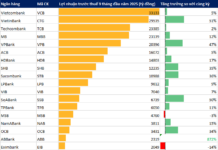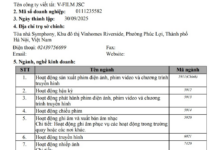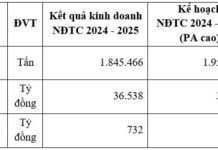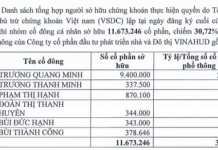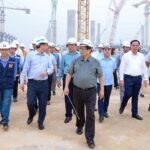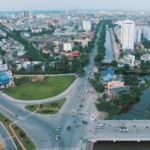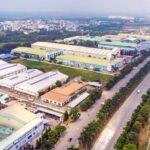
Illustrative image
At the seminar “Hanoi Apartment Market: Where is the Sustainable Living and Investment Choice?” held recently, Mr. Bui Van Doanh, Director of the Vietnam Real Estate Research Institute, shared: “Real estate value is always associated with location, utilities, and infrastructure, including technical infrastructure and social infrastructure. Looking at these criteria, we can see that the southern area of Hanoi in general and the Linh Dam area, in particular, have quite a lot of advantages, both existing and potential.”
Analyzing further the potential and attractiveness of this area, Mr. Doanh said, first is the attraction of infrastructure.
Specifically, in terms of utilities and social infrastructure, this area has a system of large hospitals such as Bach Mai, Central Ear, Nose and Throat, Vietnam-France, Geriatric, and Central Tropical Diseases hospitals; and prestigious universities such as Bach Khoa, Hanoi Medical University, Economics, and Construction.
“If supplemented with primary and preschool educational institutions, the social infrastructure system will be complete, addressing the concerns of residents, especially young residents, about their children’s education,” said Mr. Doanh.
He also emphasized the great potential of this area, in line with the city’s orientation and Thanh Tri district’s determination to become a district, as well as the infrastructure planning and development that has been and is being urgently and synchronously implemented.
Many key roads have been and are being constructed, such as the low bridge over Linh Dam Lake, the Ring Road 2.5, the road connecting Ring Road 2.5 with Dai Tu Street, the road connecting Ring Road 2.5 with Aeon Mall through Giap Bat Ward, the road connecting Giai Phong with Truong Dinh through Giap Bat Bus Station, and the southern axis road of Hanoi with an investment of 7,500 billion VND, including 8 lanes crossing 4 districts and counties of Hanoi: Ha Dong, Thanh Oai, Ung Hoa, and Phu Xuyen; the Ring Road 4 project; and the Ring Road 3.5…
According to Mr. Doanh, the impact of the high-speed North-South railway project with the starting point at Ngoc Hoi station in Ngoc Hoi and Lien Ninh communes (Thanh Tri district, Hanoi) was also mentioned. The Ngoc Hoi complex can become a catalyst for developing the southern urban area into a modern industrial, service, and commercial hub of the capital. Hanoi plans to allocate about 250 hectares to the Ngoc Hoi complex to build a full range of functions for a national and urban transport hub.
From the Ngoc Hoi complex, the North-South high-speed railway will connect with the northern Red River railway network through the eastern and western ring railway systems according to the planning; connect with the Hanoi center through the urban railway No. 1; connect with Noi Bai international airport through the urban railway No. 6; and connect Hai Phong seaport, international transshipment with China through the Lao Cai – Hanoi – Hai Phong route and the Hanoi – Lang Son route.
“The southern gateway area of Hanoi can be likened to a magnet, attracting investors. Surely, in the future, real estate projects in the south will benefit,” said Mr. Doanh.
Second is the advantage of location. According to Mr. Doanh, the southern area, including Linh Dam, is very close to the core area and the Old Quarter, with quick and convenient access to the center. There is a feeling of not being separated from the core, a sense of cultural and customary intermingling. Linh Dam is just under 10km from Ho Guom Lake, and there is no river separating the two, so there is still a sense of spatial and cultural proximity.
This is beneficial for population dispersal from the core area when households want to split to reduce the pressure of living in cramped conditions in the core area or when people working in the center want to live nearby and commute conveniently.
There are cultural, customary, and geographical factors at play here. There is a fact that the distance from the center to Linh Dam is comparable to the distance to the Cau Duong area in the east or Pham Hung and Pham Van Dong streets in the west, but people moving from the central area to Linh Dam will always feel closer to the center. This factor will be further enhanced when the transportation infrastructure is complete, increasing the advantage of this area.
Third is the advantage of demographics. The population shift from the provinces to Hanoi is continuous and increasing. Although there is no specific statistic, it can be observed that new residents moving to Hanoi are mostly young workers, mainly from the southern provinces of Hanoi, such as Nam Dinh, Thai Binh, Thanh Hoa, and Nghe An, followed by Ha Nam and Ninh Binh.
Therefore, this group of residents generally has a high demand for buying homes. Their choices are generally based on criteria such as reasonable prices, convenient transportation to the workplace, availability of utilities, especially schools for their children, and the convenience of traveling to the southern provinces of Hanoi, their hometowns.
“The southern area of Hanoi, in general, and Linh Dam, in particular, almost meet the above criteria, such as proximity to the core area, affordable prices, and the convenient Phap Van-Cau Gie axis connecting to the southern provinces, which are the hometowns of these new residents,” said Mr. Doanh.
He argued that currently, apartment prices in this area are still lower than in some other areas due to the lack of infrastructure synchronization. The biggest concern for those with a housing need is infrastructure, including technical and social infrastructure. But as mentioned above, once the Ring Road 2.5, Ring Road 4, and Ring Road 3.5 are completed, they will decongest Giai Phong Street and Phap Van intersection… and the attractiveness of the Linh Dam area will increase.
Especially when the social infrastructure, especially the primary and secondary education system, fully meets the needs of young families, the attraction of apartments in this area will be strong, and prices will increase.
Transforming Logistics into a High-Value-Added Service
The draft Strategy for the Development of Vietnam’s Logistics Services for the period 2025 – 2035, with a vision towards 2045 (Draft Strategy), sets ambitious targets for the industry’s growth. By 2035, the strategy aims to achieve an industry growth rate of 8-12%; with 80% of logistics businesses having undergone digital transformation, and 70% of the workforce professionally trained. Additionally, it targets an outsourcing rate of 70-80%, a reduction in logistics costs to 12-15% of GDP (from the current 16-18%), and an LPI ranking of over 40.
The Prime Minister’s Fifth Inspection of the Long Thanh Airport Project Site
On December 3rd, Prime Minister Pham Minh Chinh visited Dong Nai to inspect the progress of two key infrastructure projects: the Long Thanh International Airport and the Bien Hoa-Vung Tau Expressway. With a keen eye for detail, the Prime Minister assessed the development of these projects, which are expected to boost economic growth and connectivity in the region.
“A Whopping $240 Million Invested in Ha Nam’s Industrial Parks”
The People’s Committee of Ha Nam Province has granted investment registration certificates for two new industrial parks: Dong Van VI and Thanh Binh I. Together, these industrial parks span an impressive 476.6 hectares and boast a total investment capital of VND 5,610 billion.










